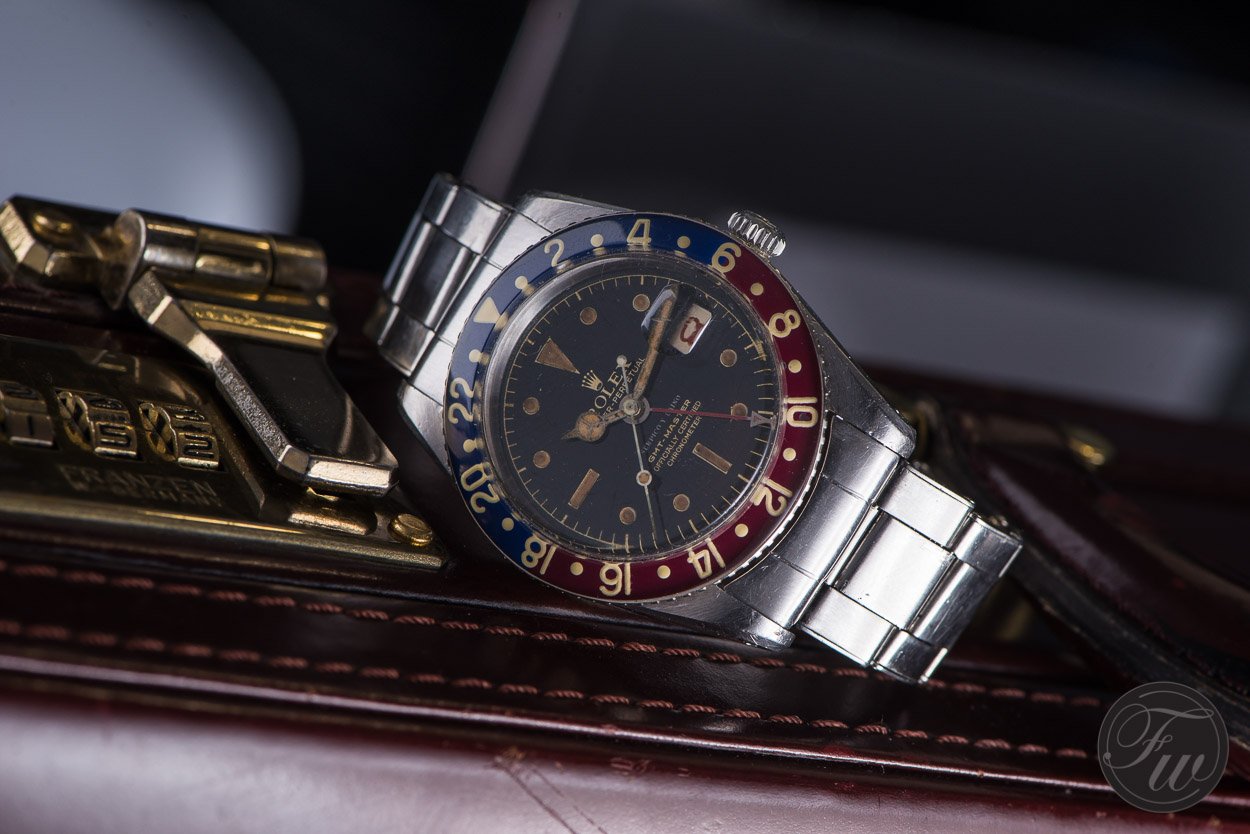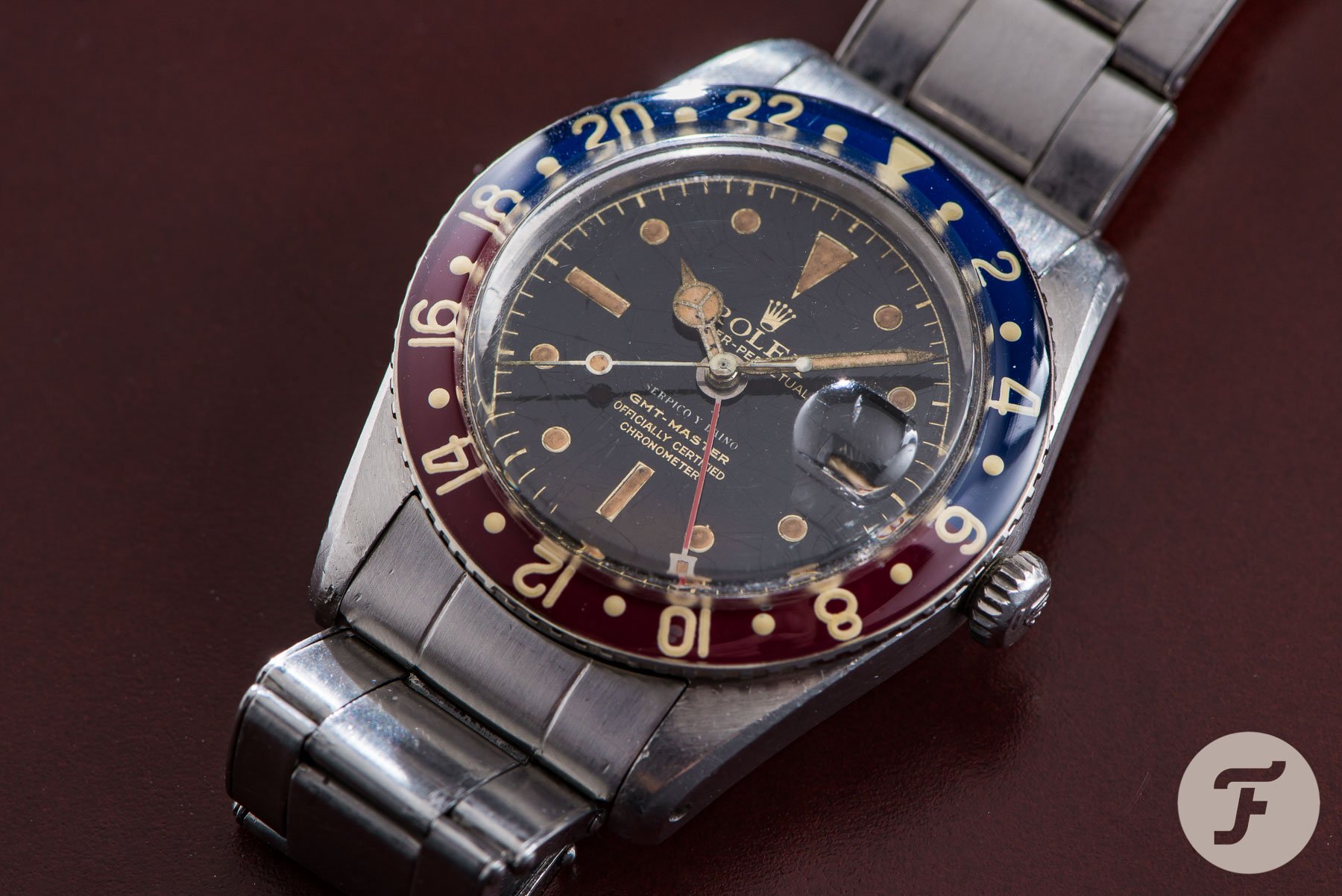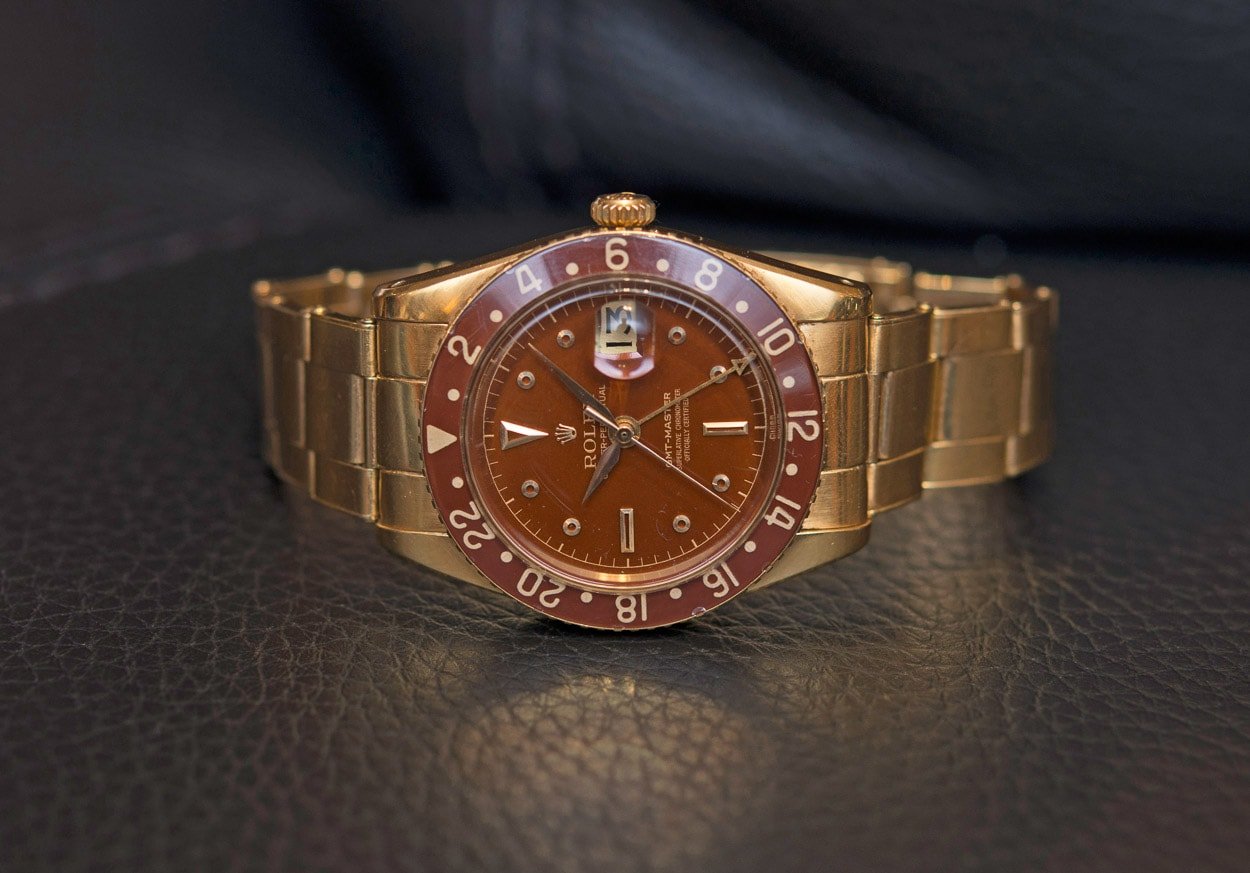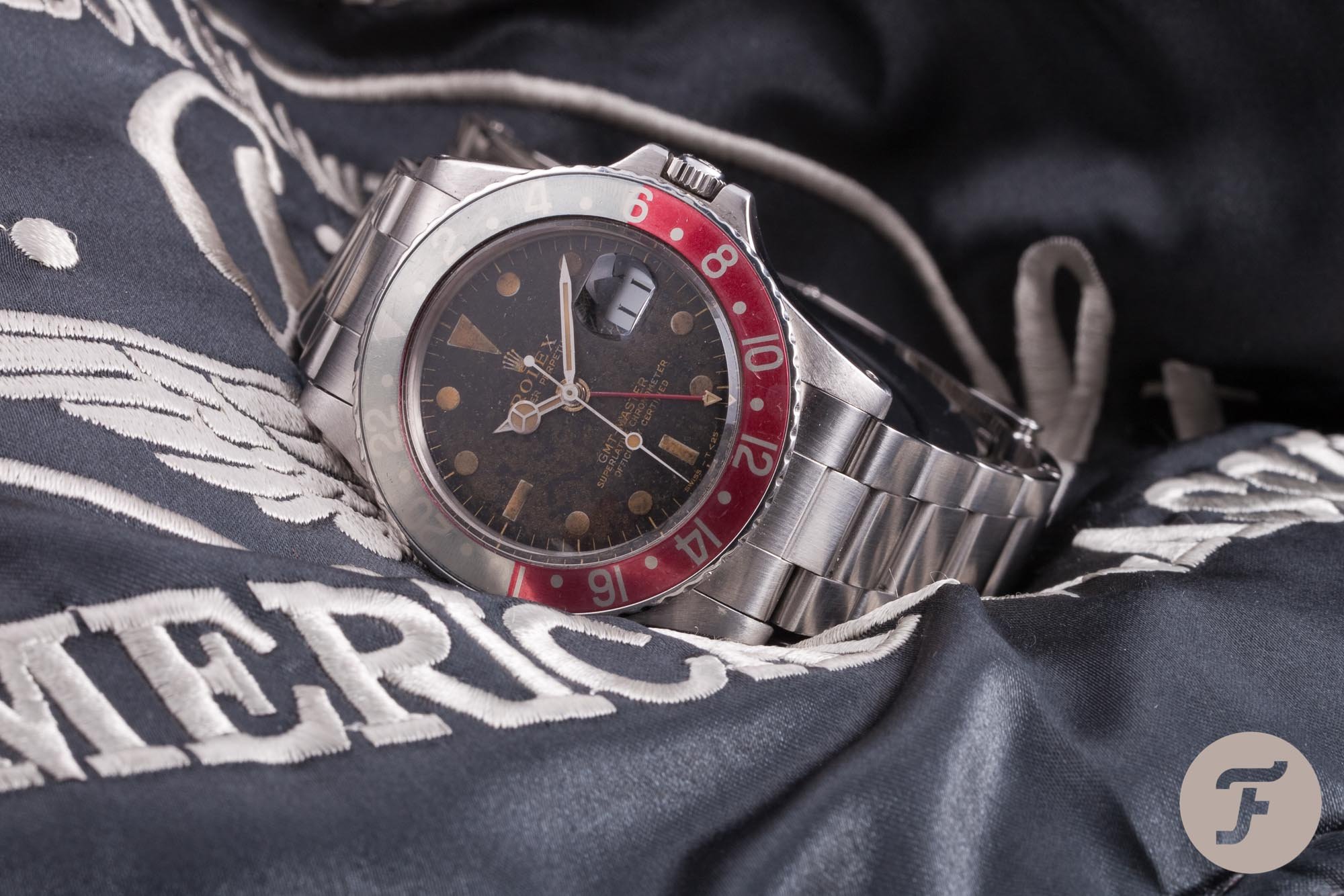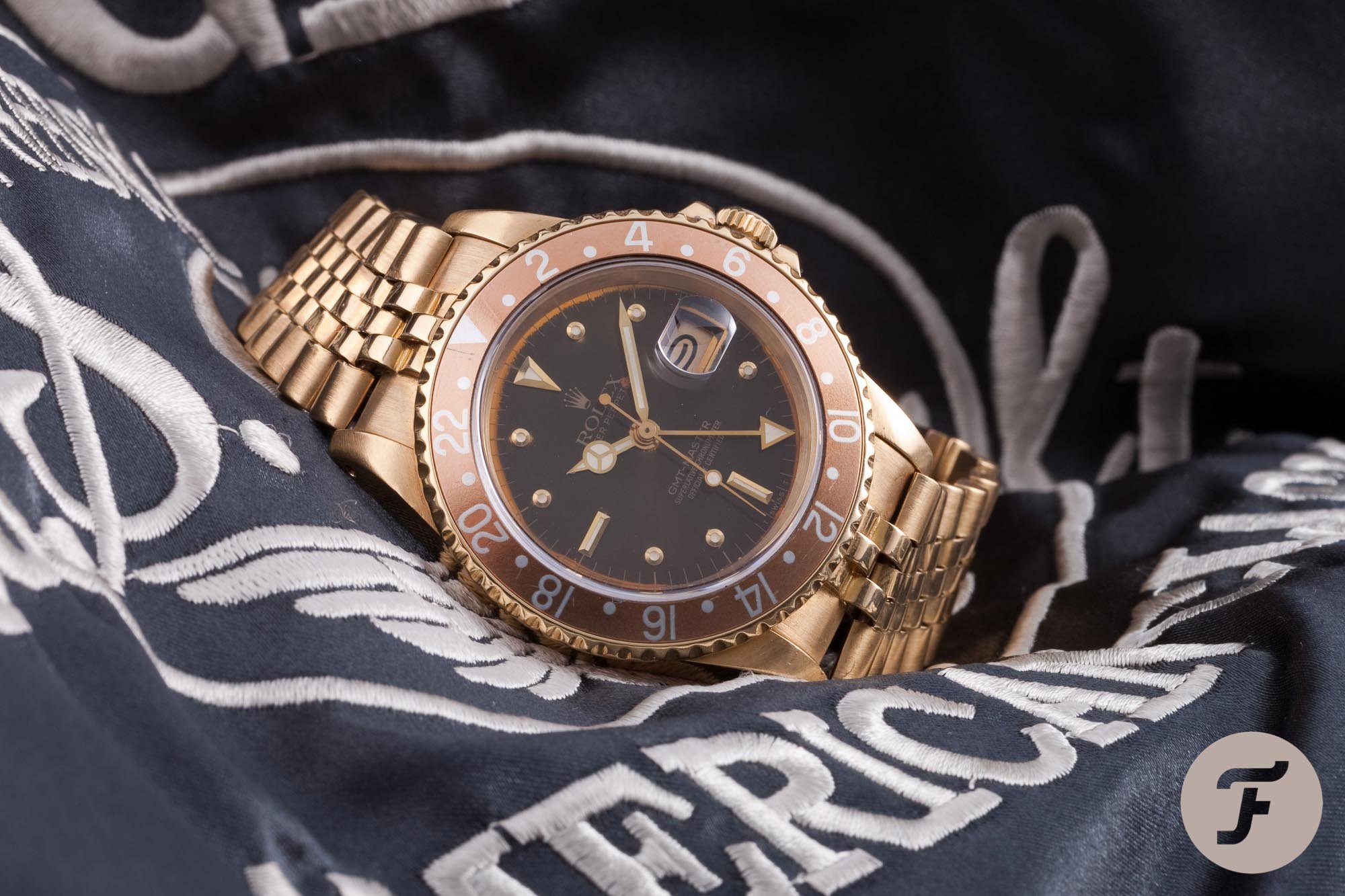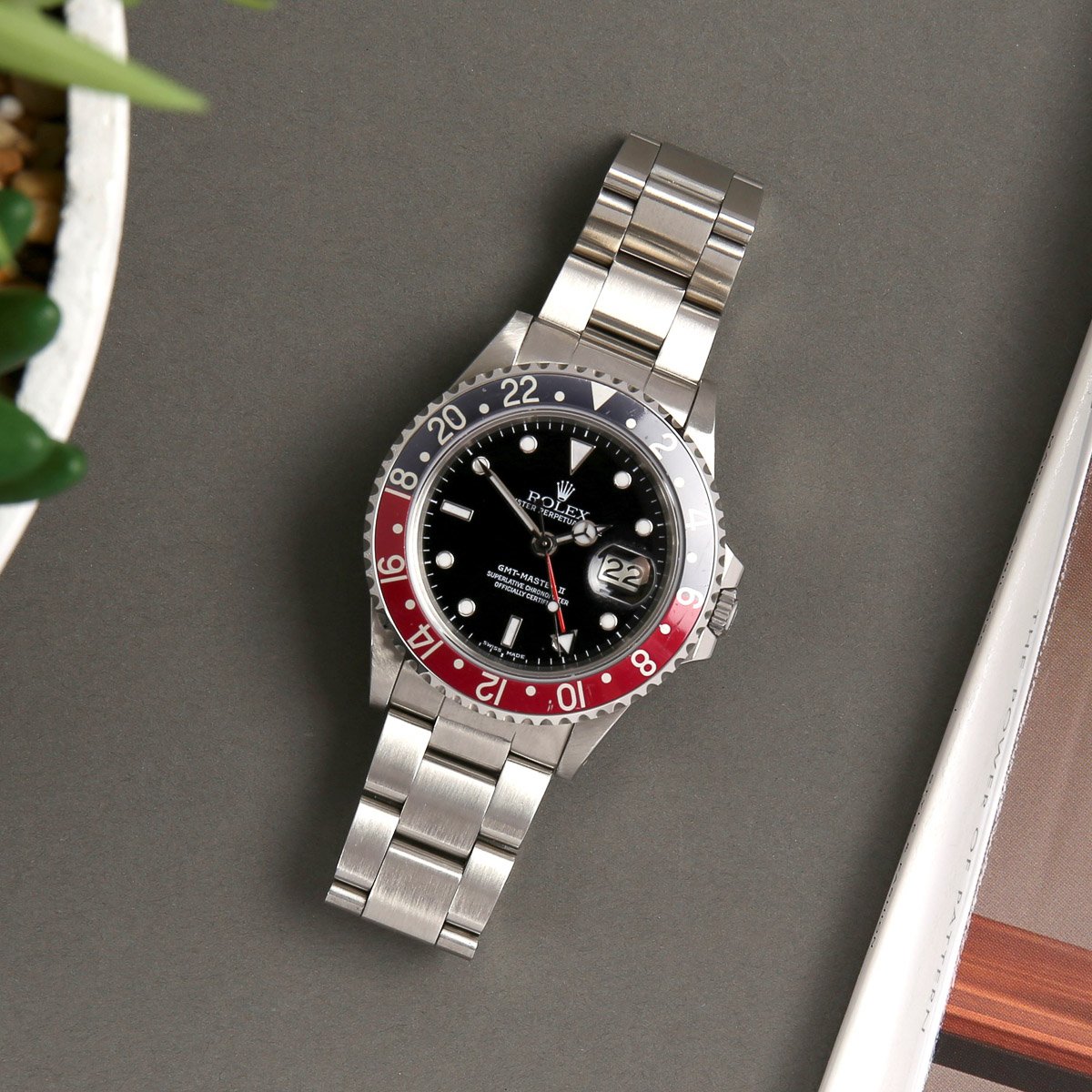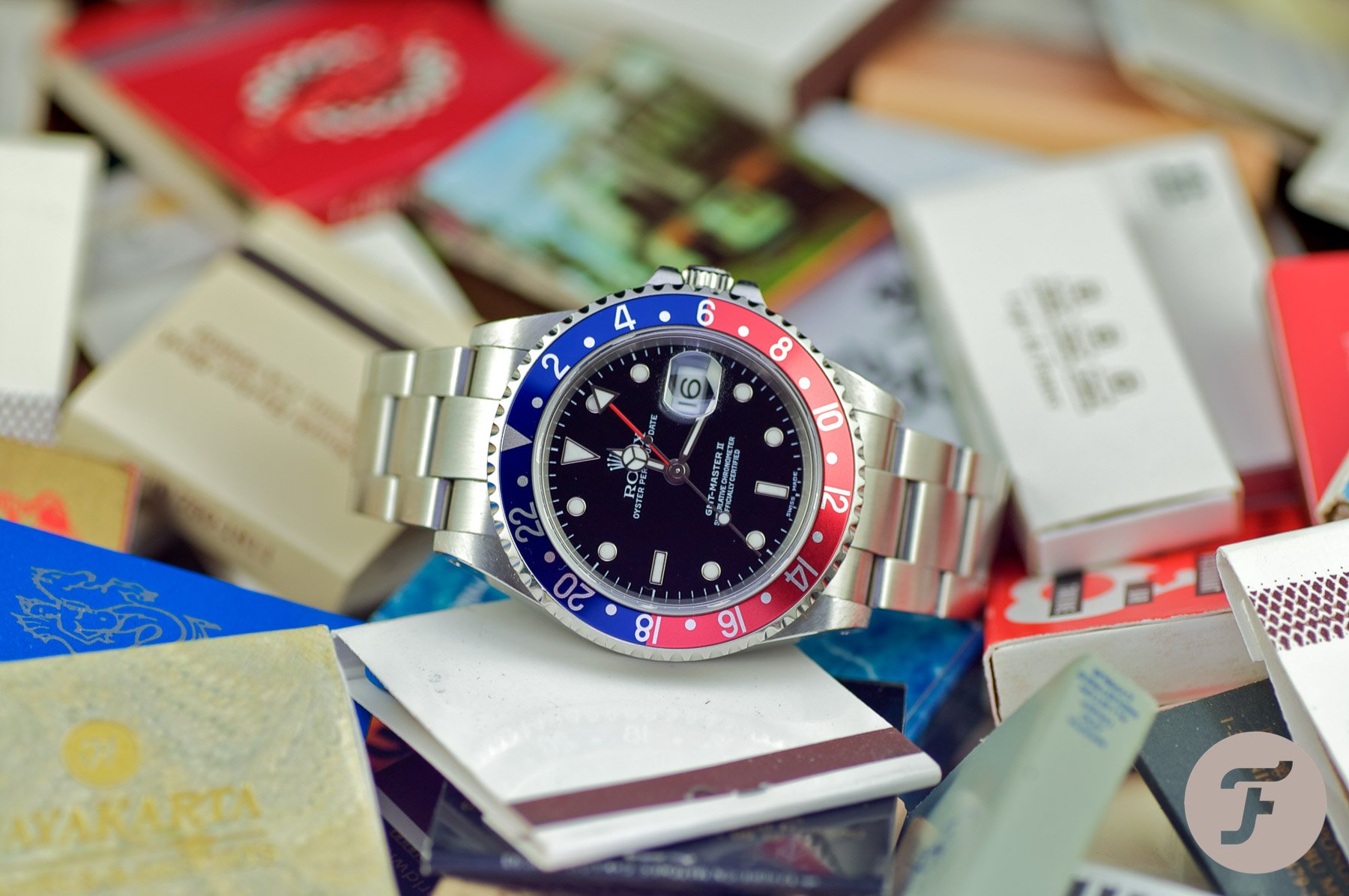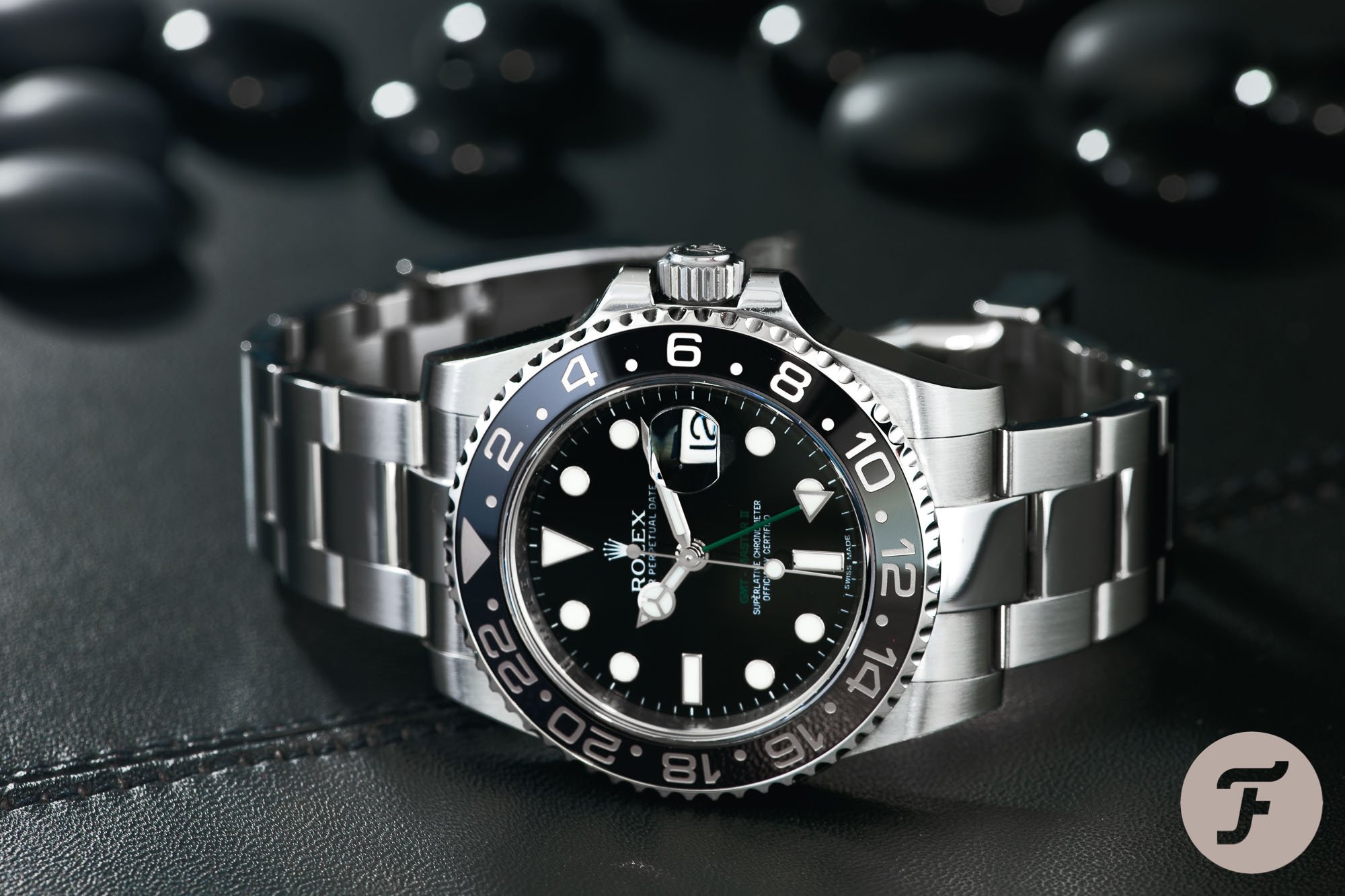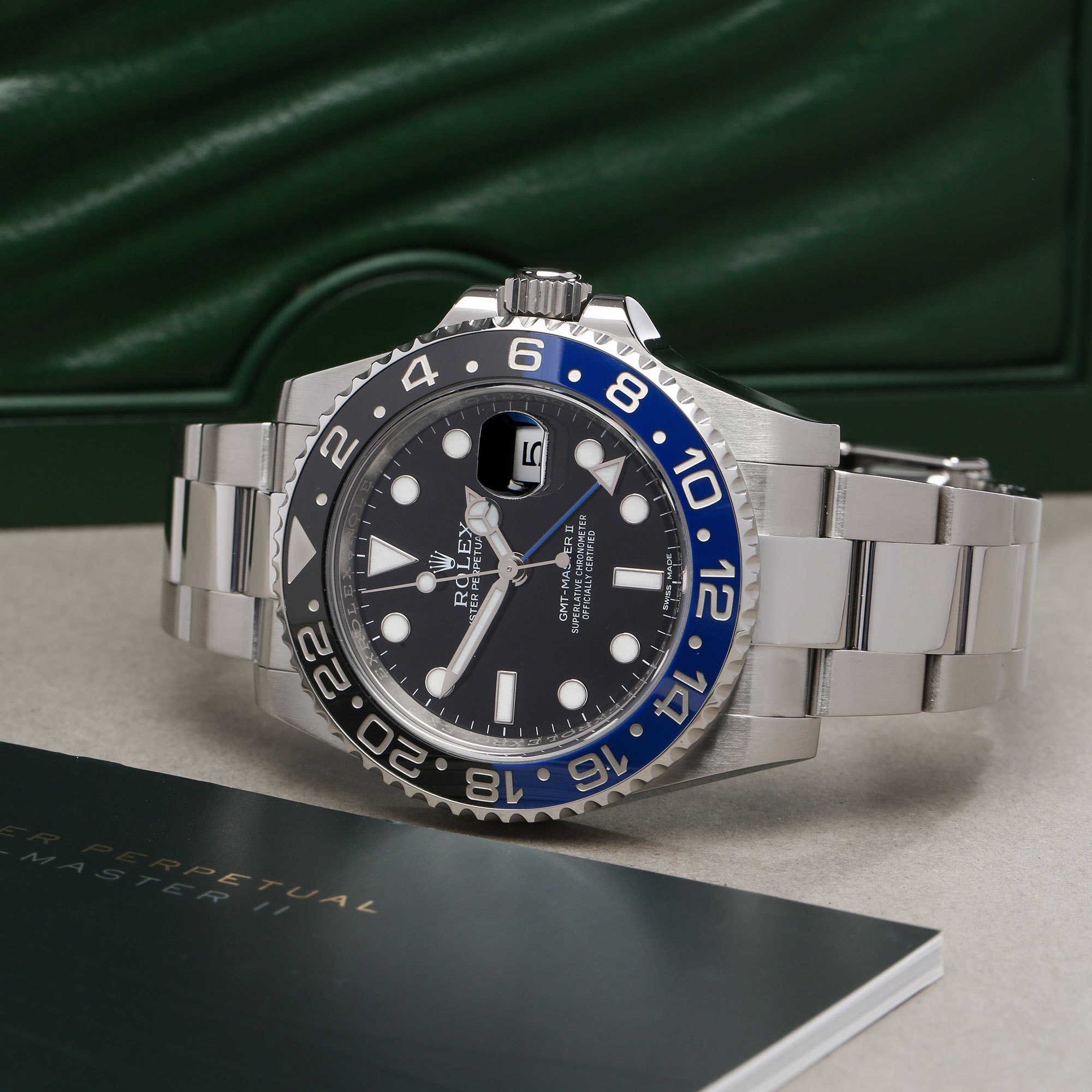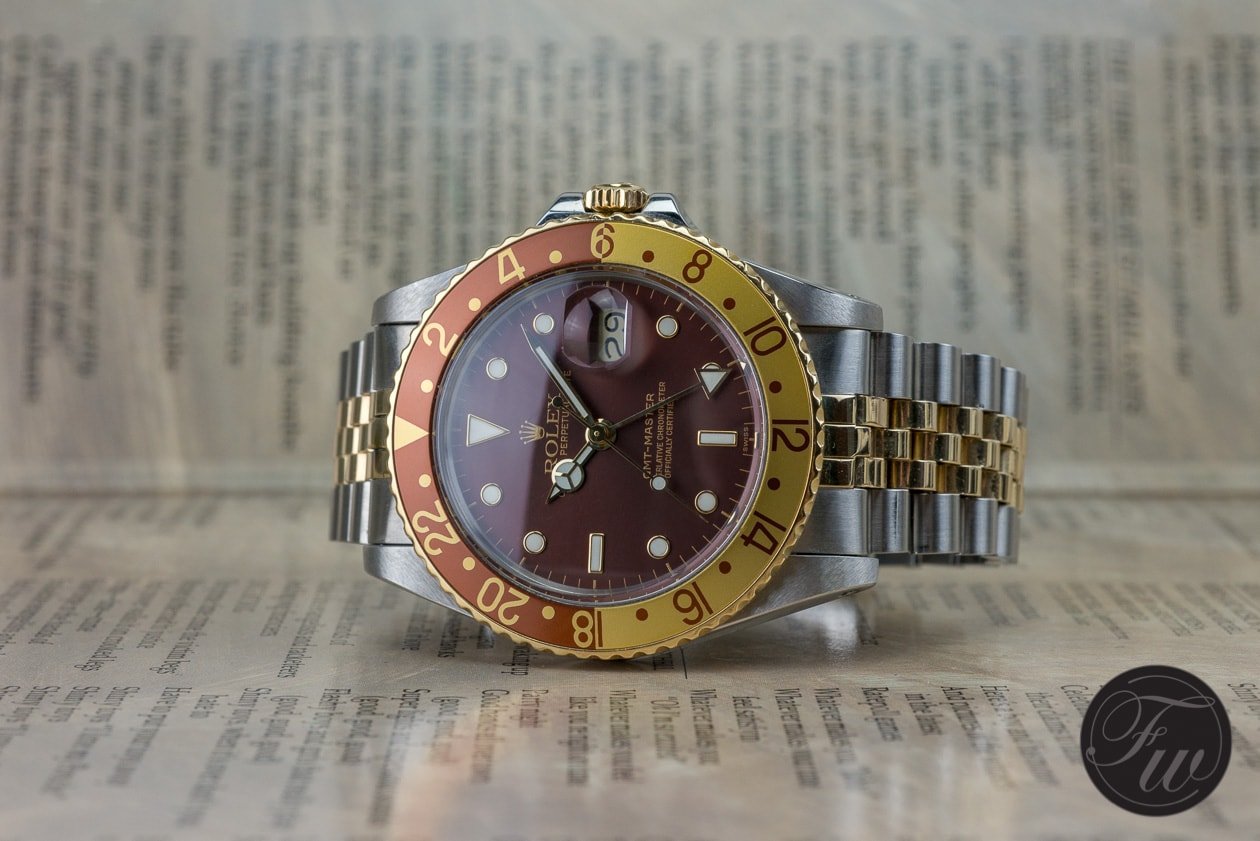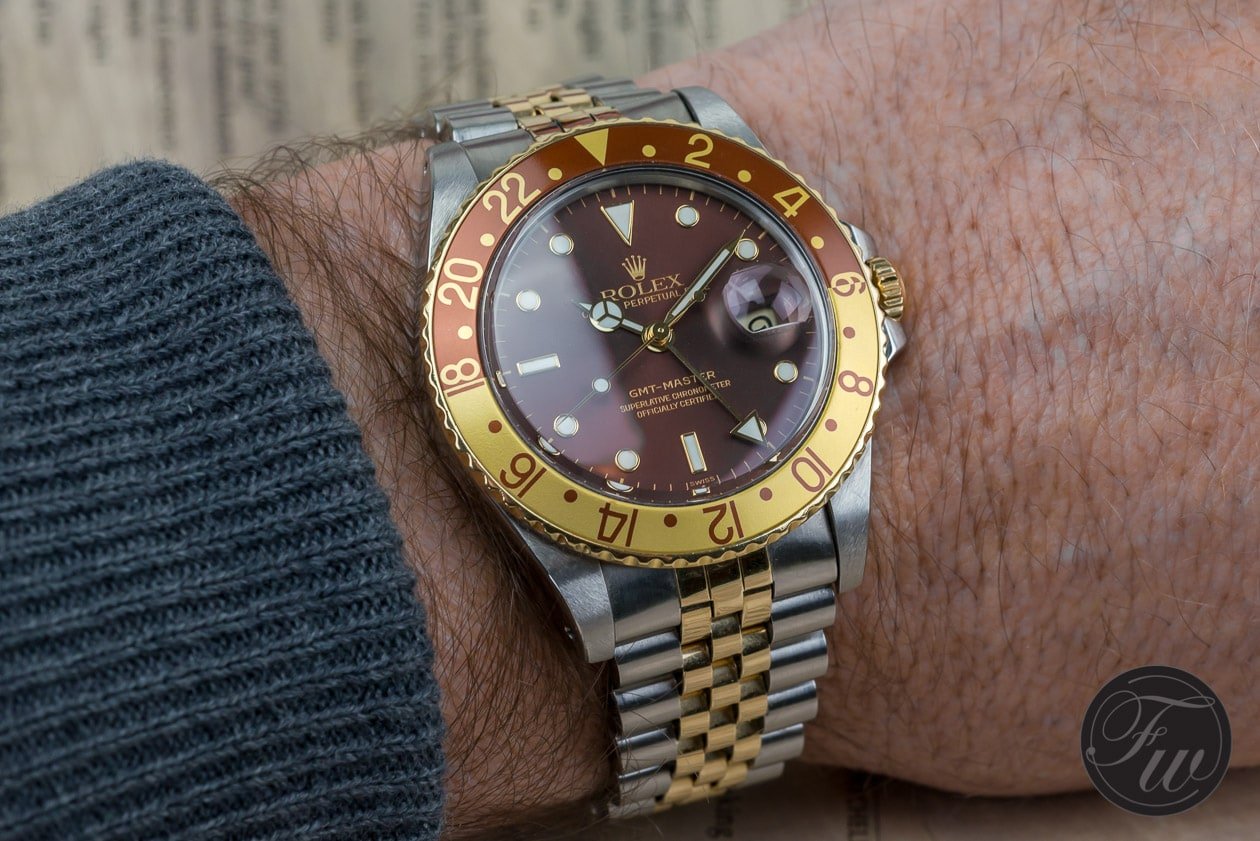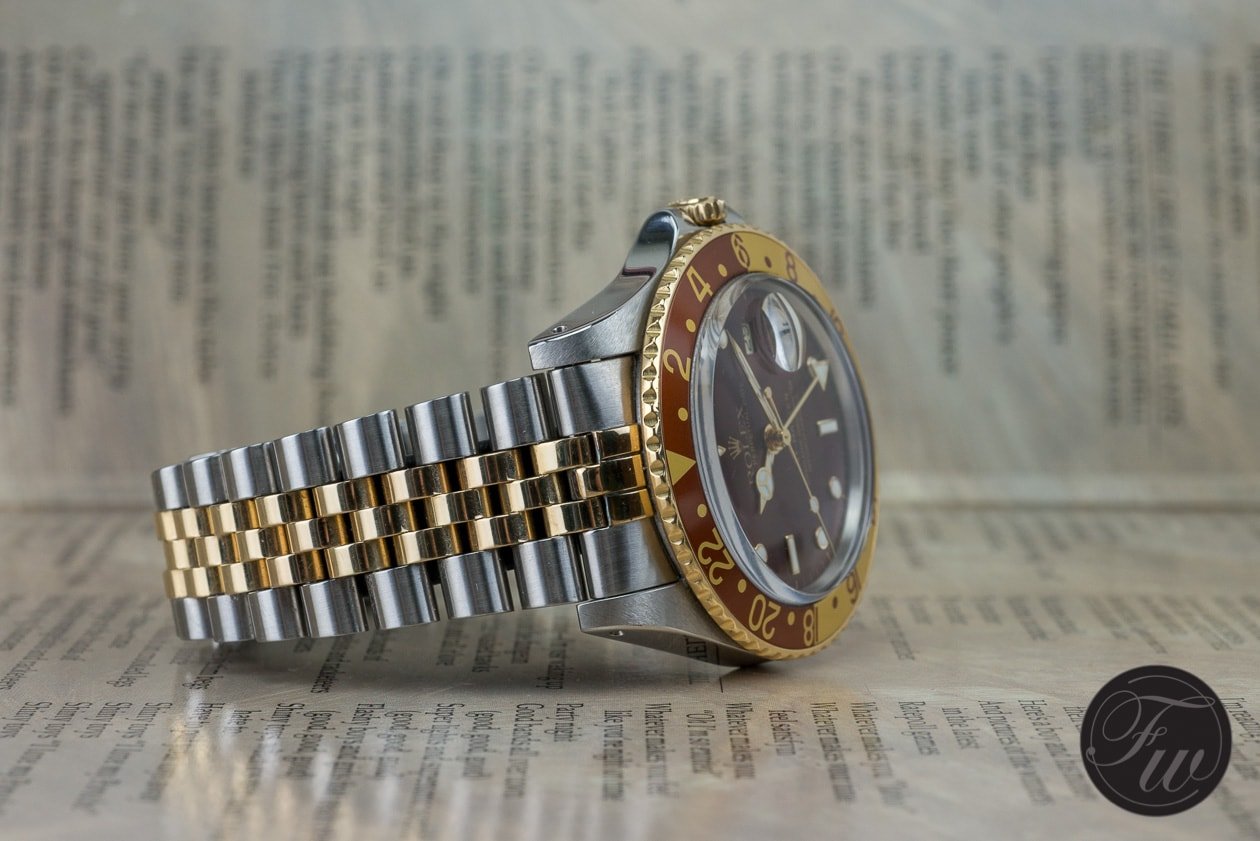Fratello’s Top 5 Rolex GMT-Master References Ever Produced
It’s time for a new Friday Top 5! We decided to focus on one famous watch for each article in this series and pick our five favorite references ever produced. Four of these references will be based on the historical importance of the specific watch in the grand scheme of things. Though there may be some overlap, it’s not a question of which references are the most collectible or of the highest value on the market. The fifth pick is our Fratello favorite that takes the current market price and collectability into account, potentially making it a sleeper reference. As such, the last pick could be described as our wild card. In this second installment of the series, we will take a look at the Rolex GMT-Master. What are the top five references for the most iconic GMT watch out there?
Before we jump into this week’s list, let me thank you for the great responses to last week’s list of our best Rolex Submariner references. One of the comments actually sparked this week’s list. Reader Goldenyears asked whether we could create a list of the best GMT-Master references out there. As it happens, the GMT-Master is one of my all-time favorites, and many members of the Fratello team love this classic initially created for Pan Am pilots traveling all over the globe. As I explained last week, these lists spark a lively debate amongst the Fratello team members. But after quite a bit of debate, we came up with a list of our five favorite Rolex GMT-Master references. So without further ado, let’s jump in.
1. Rolex GMT-Master ref. 6542
When watches are as groundbreaking as the Rolex GMT-Master, it is a logical step to start with the first reference. Rolex produced the GMT-Master ref. 6542 from 1954 to 1959. The watch introduced a new aesthetic to the world that has gone on to become the blueprint for the category of GMT watches. Essentially, the GMT-Master ref. 6542 was an evolution of the Rolex Turn-O-Graph ref. 6202 with a different bezel and an added GMT hand. It featured a 38mm stainless steel Oyster case, a black gilt dial, and a Bakelite bezel featuring the iconic and extravagant Pan Am-inspired colors. As I also explained in the Buying Guide article for the best Rolex models from the 1950s, the red and blue colors were darker on the Bakelite bezel than they would be on later aluminum bezels. Combined with the radium lume used for the numerals, it creates a visual feast.
But the Bakelite bezels were replaced after two years by anodized metal versions because of the radioactive properties of the lume and because they cracked easily. Inside the case, Rolex used three different calibers for the first GMT-Master. The first was caliber 1036, the second was caliber 1065, and the final one was caliber 1066. As you would expect, Rolex created multiple dial and case variants. The main dial variations that collectors tend to differentiate are the versions with small lume plots and the much rarer versions with oversized lume plots. Regarding the case shape, Rolex played with smaller and wider bevels in the four-year production period. All in all, you will see some differences between the various versions, but the aesthetic is remarkably similar to all the models that came after.
A gold version of the ref. 6542
Rolex produced more than just a stainless steel version of the ref. 6542. The brand also made a version in full 18K yellow gold that came with a burgundy bezel. Rolex produced this model with two different dials; the first is the burgundy-brown version you see in the picture. The second is a lighter champagne dial. As most of you will know, the first full-gold models had the illustrious nipple dial, and the gold ref. 6542 was the first Rolex model to feature one. Additionally, the handset is different compared to the steel models. The gold version featured classically styled alpha hands instead of Mercedes hands. On top of that, the seconds is a very simple baton-style hand. Despite these differences, this watch is still very much a GMT-Master. This was also the first full-gold Rolex sports model, making the ref. 6542 a landmark reference for the GMT-Master.
2. Rolex GMT-Master ref. 1675
The second reference on this list was a no-brainer. The GMT-Master ref. 1675 is probably the most famous of all. It was produced from 1959 until 1980, making it one of the longest-produced references of the brand. While the ref. 6542 is my favorite vintage GMT-Master in terms of historical importance and overall charm, the ref. 1675 would be my favorite Rolex to own. It solves the issues with the Bakelite bezels and looks stunning. I explained on multiple occasions that the ref. 1675 has the magical powers to look good in great condition and completely beaten up. The ref. 1675 featured a modest 38mm case that introduced crown guards and measured almost 41mm taking the iconic bezel into account. The 11mm thickness (excluding the crystal) created a slim profile that makes the ref. 1675 a perfectly proportioned daily wearer.
Rolex used the automatic caliber 1565 for the earliest versions until roughly 1965 or 1966, switching to caliber 1575 for later versions. When it comes to dials, there is a clear distinction between the earlier gilt dials and the matte black dials that Rolex used from 1966-67. In terms of different executions, there are many variations of the text on the dial. Lastly, you will see quite a few differently faded red and blue “Pepsi” bezels. Other famous versions are the “Pink Panther” with a pink and blue bezel and the “Blueberry” variant with a completely blue bezel. In the early 1970s, Rolex also released stainless steel versions with an all-black bezel. But the true magic is definitely in the iconic Pepsi-bezel versions.
Ever thought of gold or maybe a gold and steel combo?
It is no surprise that Rolex also produced a gold version of the ref. 1675 with the iconic nipple dial. Like the stainless steel model, it was available on an Oyster or Jubilee bracelet. Early cases of the gold ref. 1675 models in gold do not have crown guards. Those were introduced in the mid-1960s. Rolex also kept changing the handset on the gold ref. 1675. The first models feature the same alpha hands as its predecessor, whereas mid-1960s models have thin stick hands like the Datejust and Day-Date. Later models feature the trusted Mercedes hands. And the 1675 was also the reference that introduced the illustrious GMT-Master “Root Beer.” This ref. 1675/3 brought the famous combination of gold and steel with a brown and yellow bezel to the GMT-Master. In my opinion, it is one of the best Rolex references out there.
3. Rolex GMT-Master II ref. 16760
Next up is the Rolex GMT-Master II ref. 16760, also known as “The Fat Lady” or the “Sophia Loren.” It is a pivotal GMT-Master as it was the first that unlinked the 12- and 24-hour hands, allowing the user to read up to three zones in conjunction with the bezel. As a result of the new caliber 3085 that made that possible, Rolex used a thicker case, resulting in the “Fat Lady” nickname. Additionally, it was the first GMT-Master model that came with the now-famous “Coke” bezel with its black and red colors. During its production run from 1982 until 1988, the watch was only available with this bezel. Additional updates were a sapphire crystal, a semi-quickset date via the 12-hour hand, and a glossy black dial with white gold surrounds for the hour markers.
You could argue whether its successor, the GMT-Master II ref. 16710, isn’t a better reference to feature on this list. It was in production from 1989 until 2007 and saw some major improvements. Rolex moved on to the new caliber 3185, ensuring a slimmer case. Later iterations featured the follow-up caliber 3186. Another advantage was that the ref. 16710 was available with the trusted blue and red “Pepsi” bezel, the black and red “Coke” bezel, and an all-black bezel. This model’s lume was also updated from tritium to Luminova to Super-LumiNova. Lastly, the bracelet got solid end links in 2000, and the case lost its exterior holes in the side of the lugs. Let’s say the “Fat Lady” introduced an important new function and is more relevant in the overall lineage, whereas the ref. 16710 is the one you want as a daily wearer.
4. Rolex GMT-Master ref. 116710
The fourth pick for this list is the GMT-Master II ref. 116710. This reference introduced a beefed-up case and a Cerachrom bezel insert. The stainless steel ref. 116710 was introduced in 2007 and stayed in production until 2019. But the stainless steel model was actually not the first to feature the Cerachrom bezel insert. That honor was reserved for the full-gold 50th-anniversary ref. 116718 with its green dial and black ceramic bezel insert. But the ref. 116710 was the first stainless steel model that had the same insert and, therefore, had a much greater impact. The watch initially only came with a black ceramic bezel insert on the ref. 116710LN. It saw Rolex removing the “Pepsi” and “Coke” variants, the two iconic colorways defining the GMT-Master.
In 2013, Rolex decided to introduce the ref. 116710BLNR, also known as the original “Batman,” referring to its black and blue bezel insert. In the six years between the all-black model and the “Batman,” there was a lot of talk about the difficulties that Rolex had in producing a blue and red ceramic “Pepsi” bezel from one piece. That only happened when Rolex introduced the white gold ref. 116719BLRO in 2014. But as it turned out, the “Batman” became a huge hit for Rolex, and the color combination has become another trusted color combo in the GMT-Master’s lineage. Ref. 116710 used the caliber 3186, which also powered some of the last ref. 16710 models.
5. Rolex GMT-Master ref. 16753 “Root Beer”
The last watch on this list of five references is our wild card. The reference that we at Fratello love and some of the Fratello team members own is the GMT-Master ref. 16753 “Root Beer”. Fratello’s own Gerard wrote about his in an installment of 52Mondayz, and Mike wrote about his ref. 16753 “Root Beer,” aka the “Clint Eastwood,” in an installment of #TBT. The ref. 16753 “Root Beer” is the two-tone version of the stainless steel ref. 16750 that came out in 1980. This transitional model was the successor to the legendary ref. 1675 that introduced the ref. 1675/3 “Root Beer” variant, as mentioned earlier. Compared to its predecessor, the ref. 16753 came with the updated caliber 3075 that operated at an updated frequency of 28,800vph and featured a quickset date.
But the “Root Beer” is not necessarily about its inner workings. It is all about the glorious combination of gold and steel, the gold bezel with its iconic “Root Beer” insert, and the brown dial. The ref. 16753 was also produced with a black dial and a fully black bezel insert. While still an amazing piece, it’s all about the “Root Beer” here. The gold and brown bezel insert, in combination with the brown dial, is something truly special. Especially in combination with the Jubilee bracelet, this two-tone model is a feast for the eyes and an absolute joy to wear. But as the gold and steel combo is not the most popular amongst watch fans, you can buy one for around €15K. While that is a lot more than a couple of years back, it is still very affordable compared to some of its peers. That is why we wanted to highlight the glorious Rolex GMT-Master ref. 16753 “Root Beer.”
Final thoughts
We realize that you might not agree with all the picks for this list. That’s why we would love this to be the start of a bigger discussion. Let us know your picks for the most relevant references in the development of the Rolex GMT-Master. We will see you next week for another Top 5 list of references for a different classic watch.

